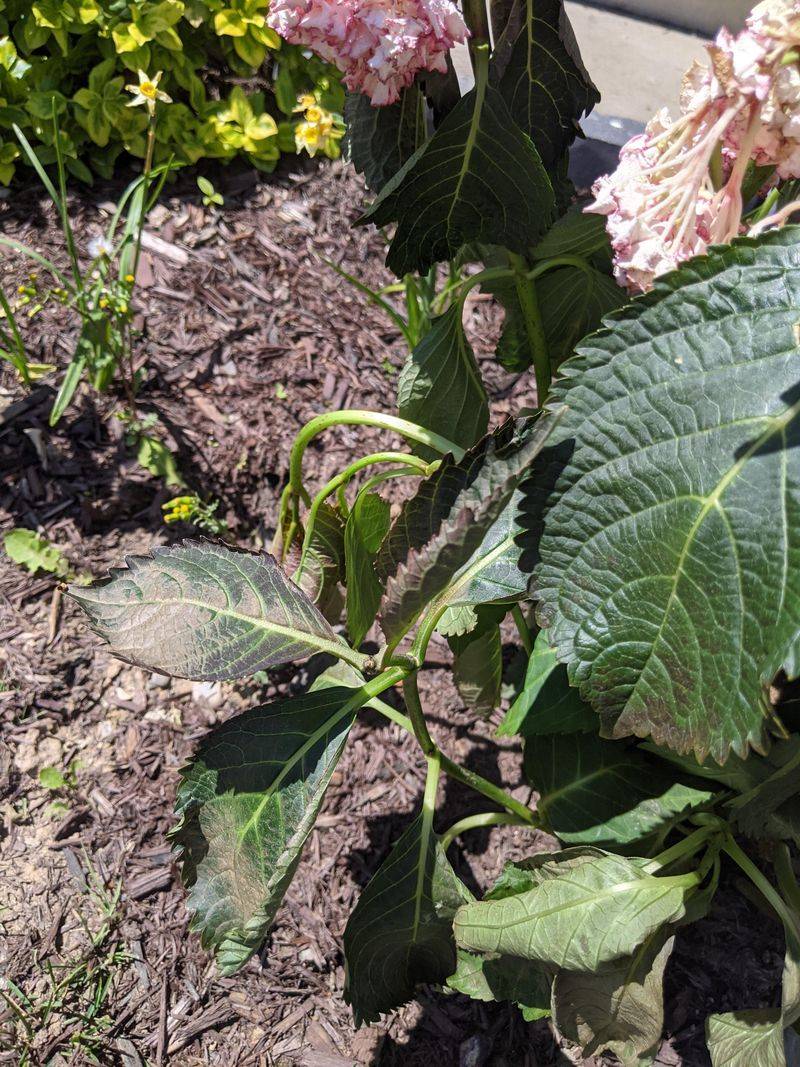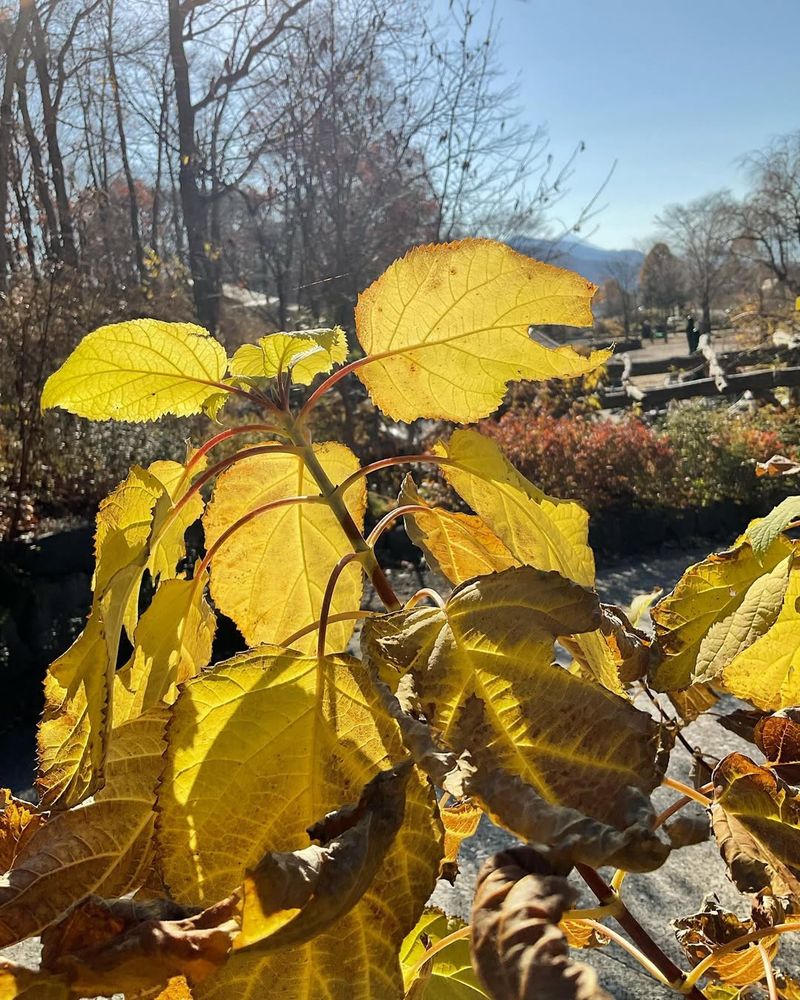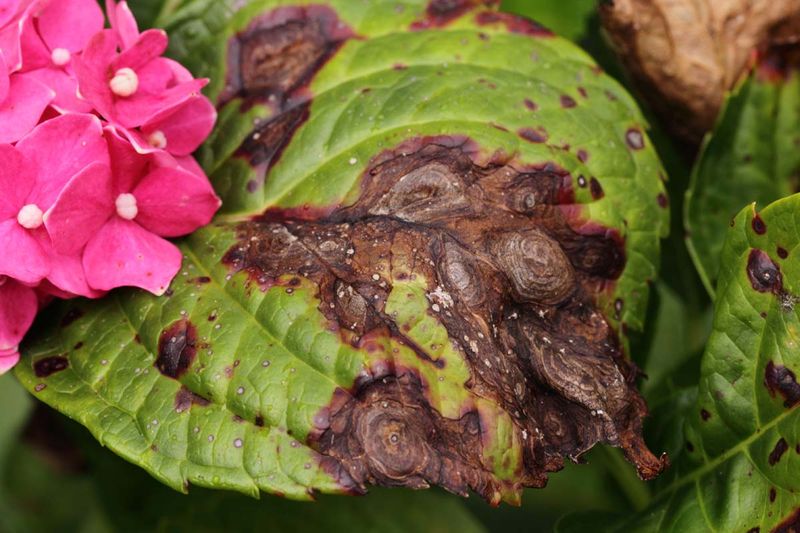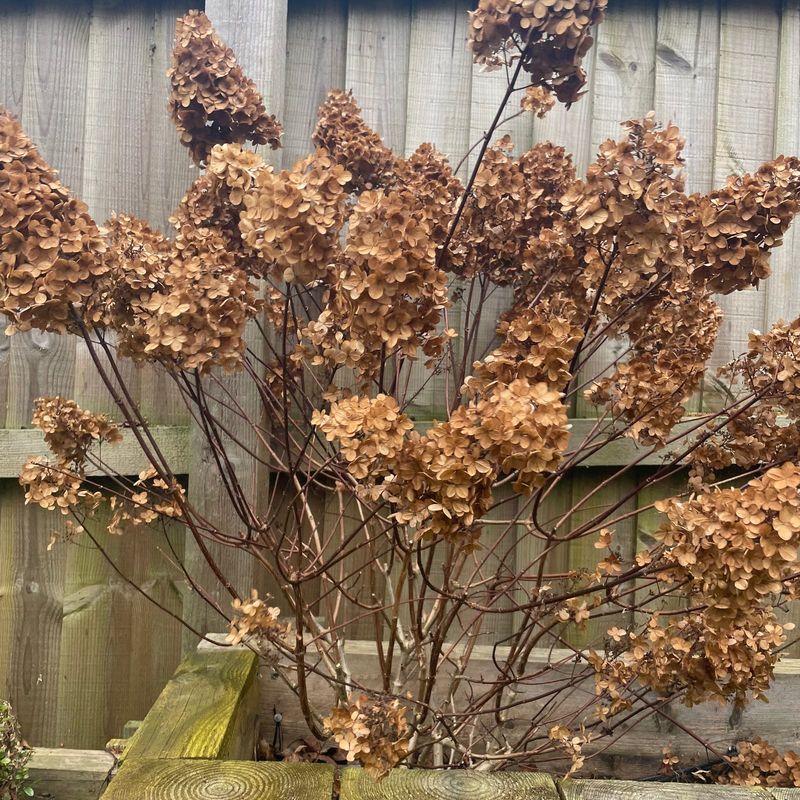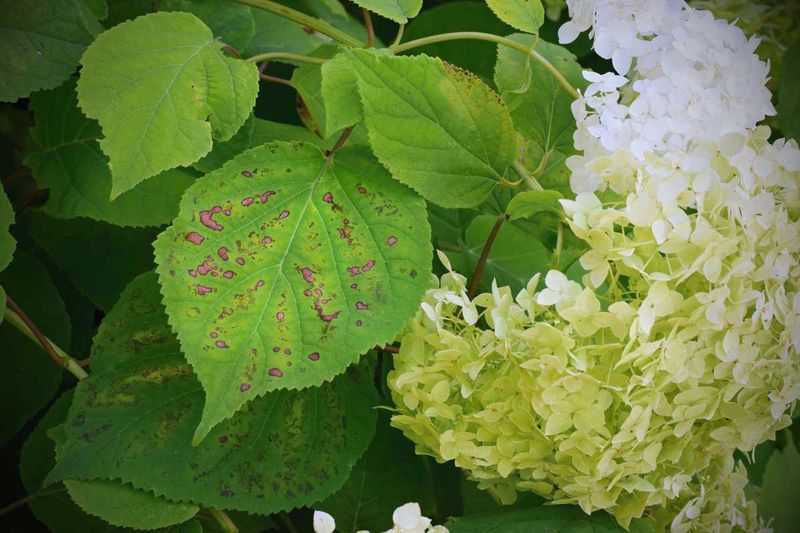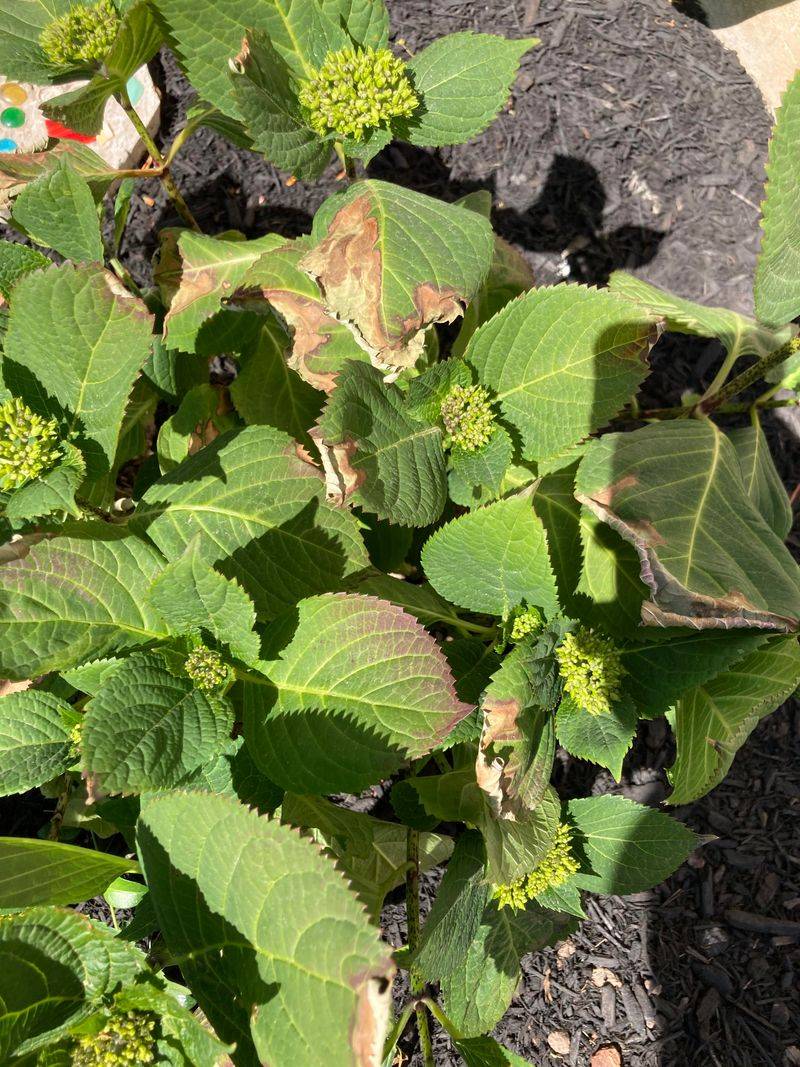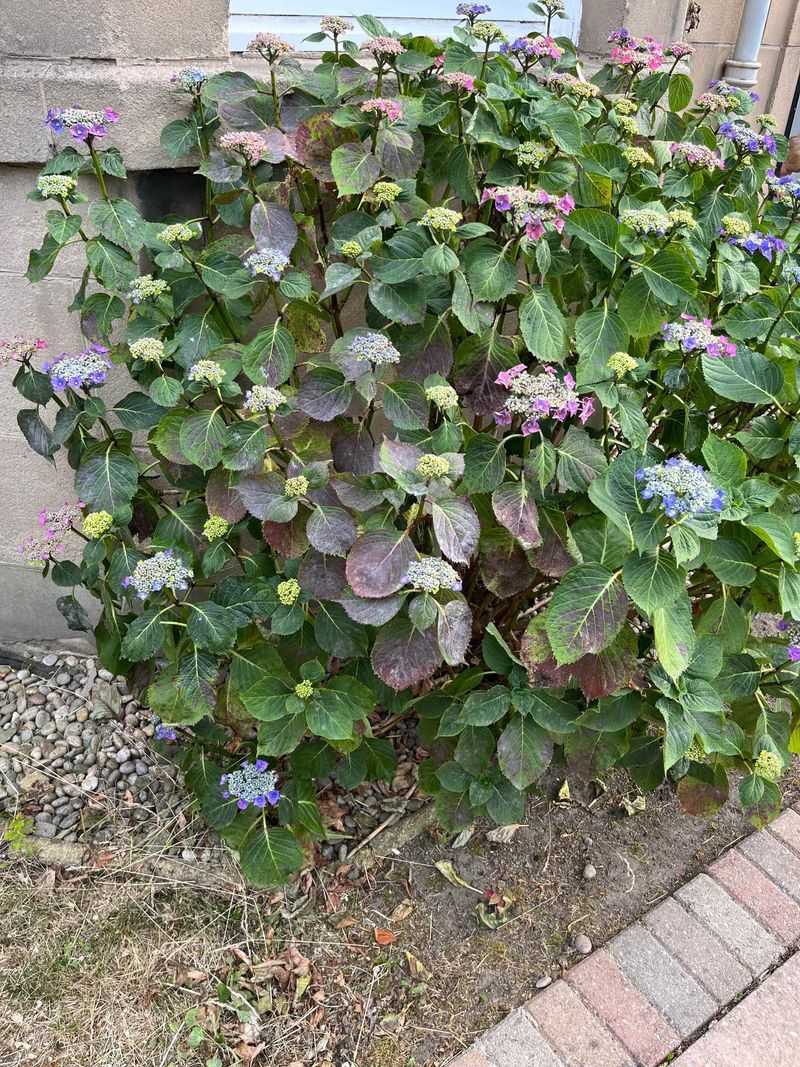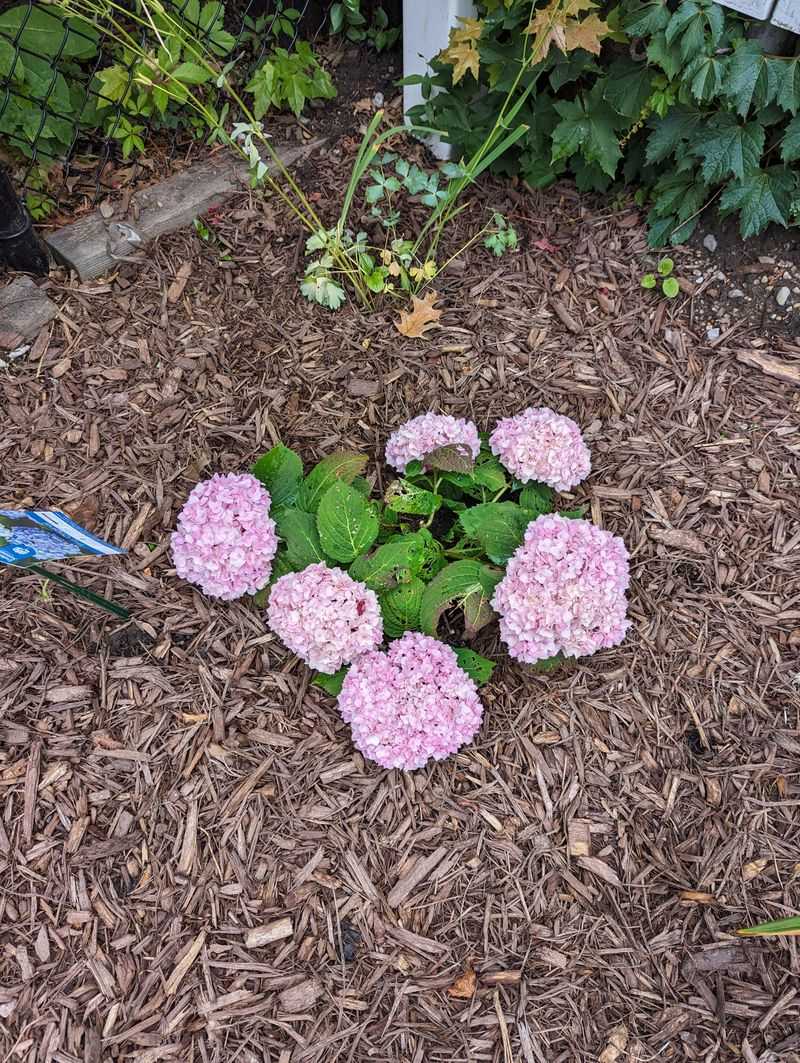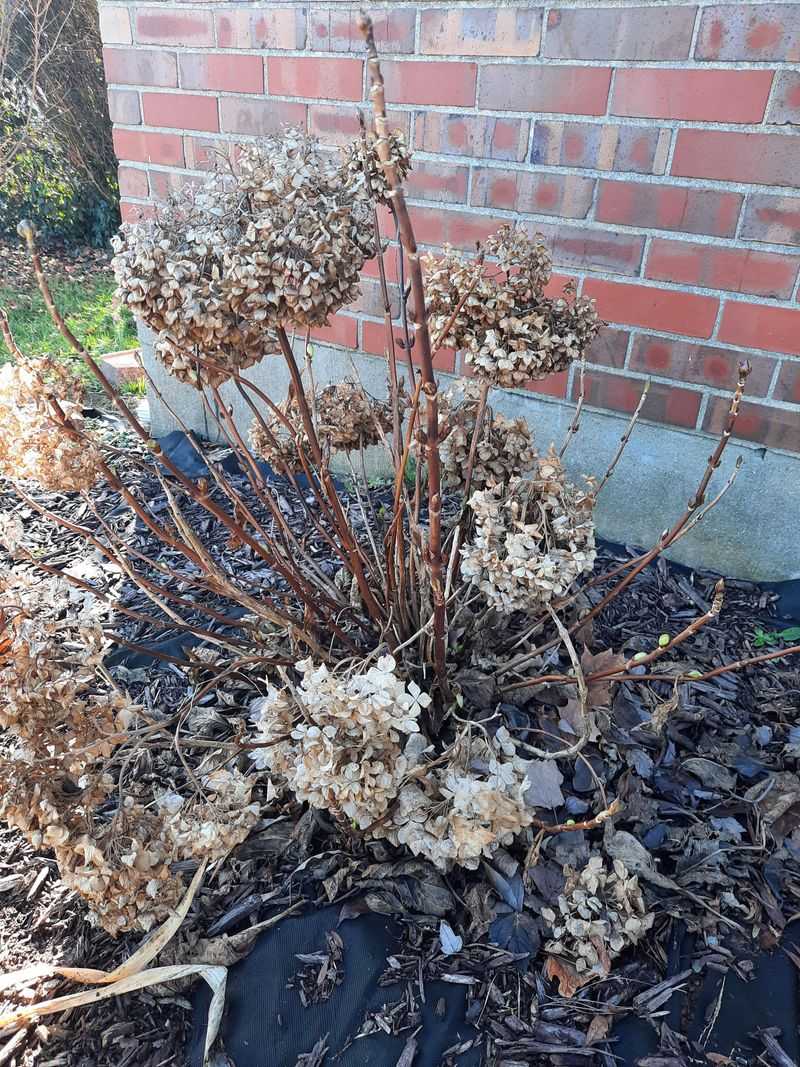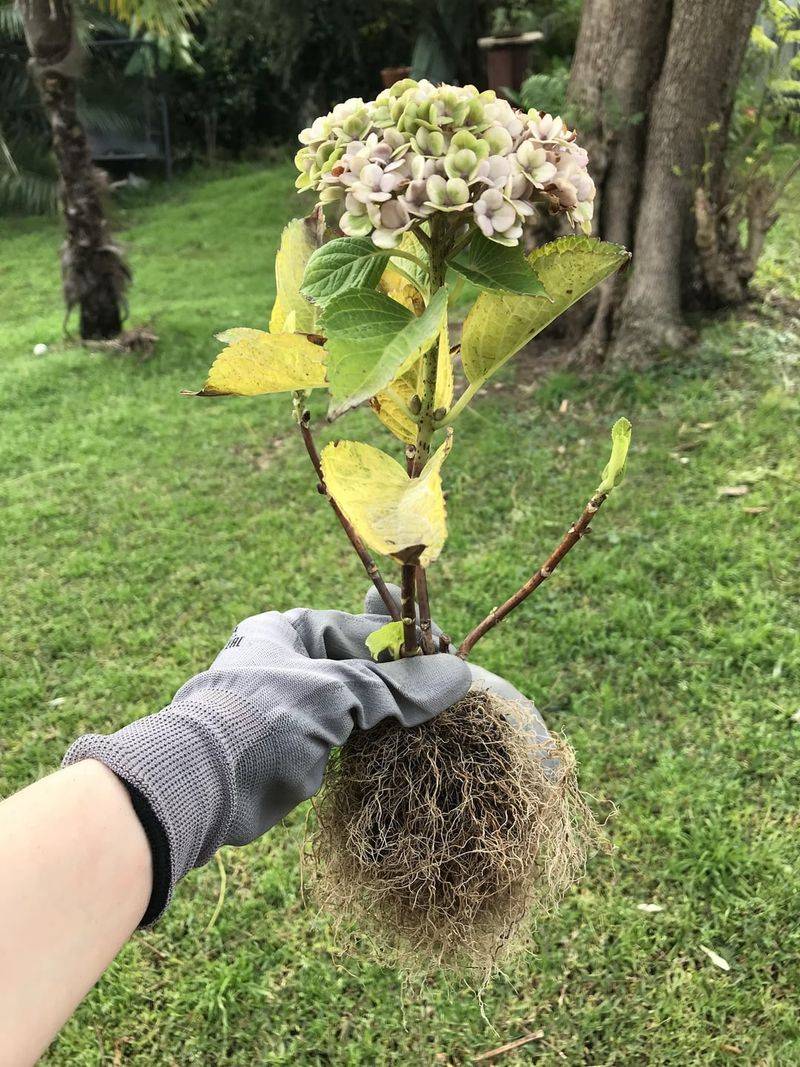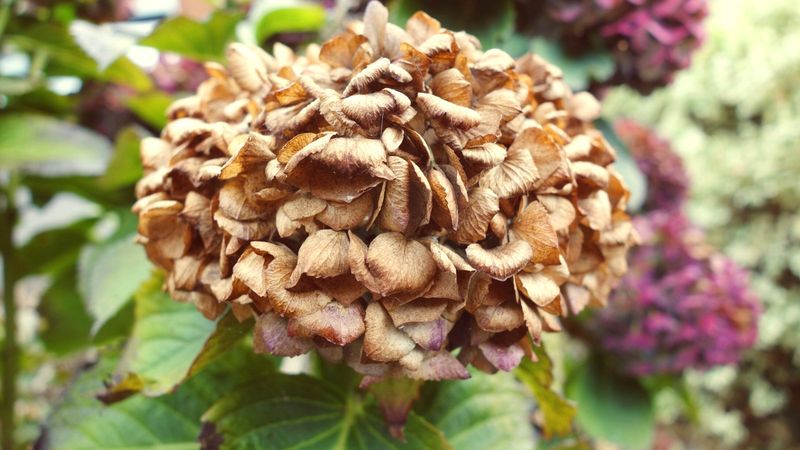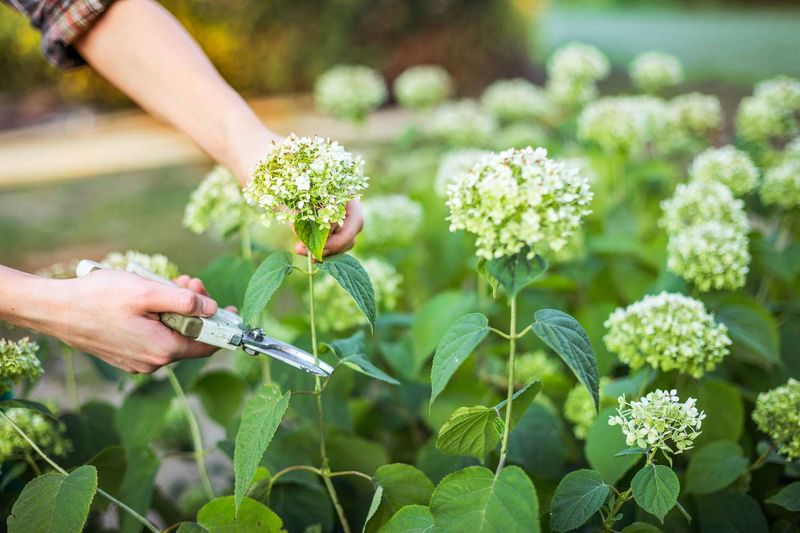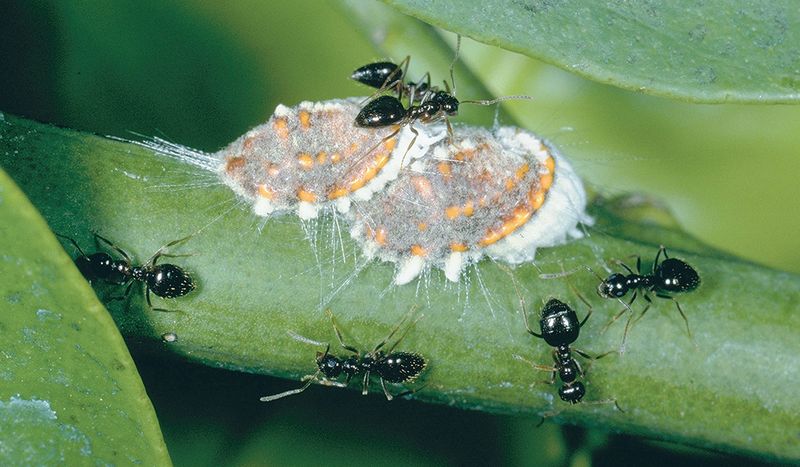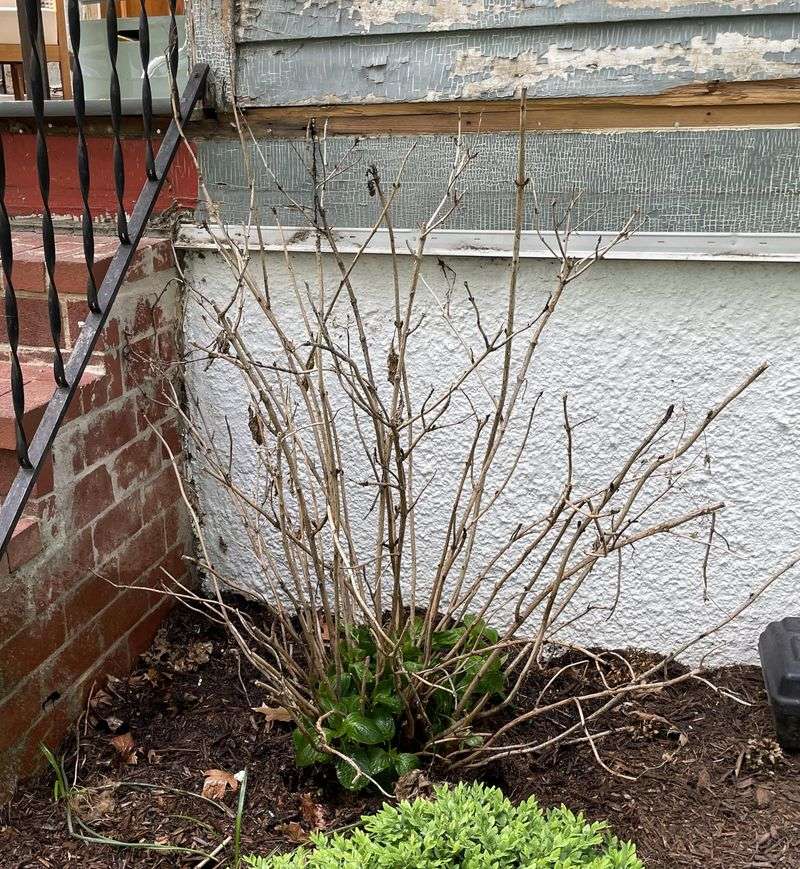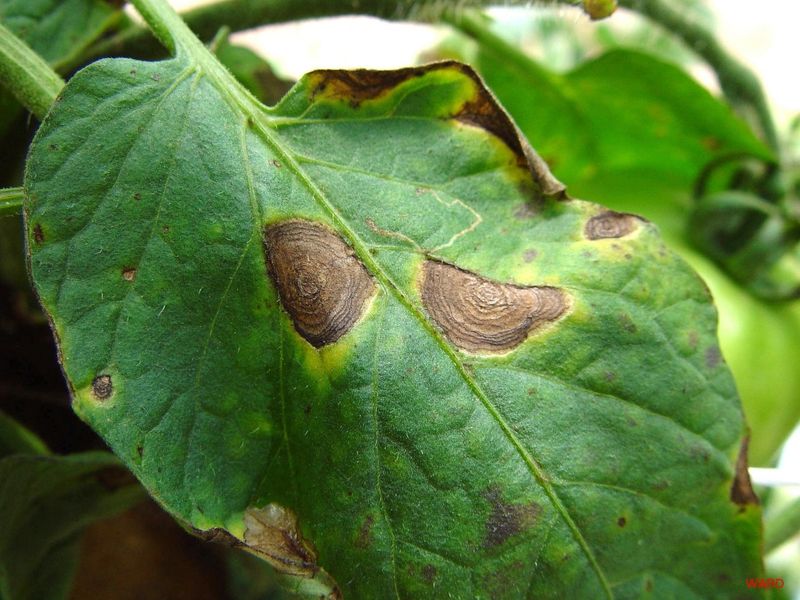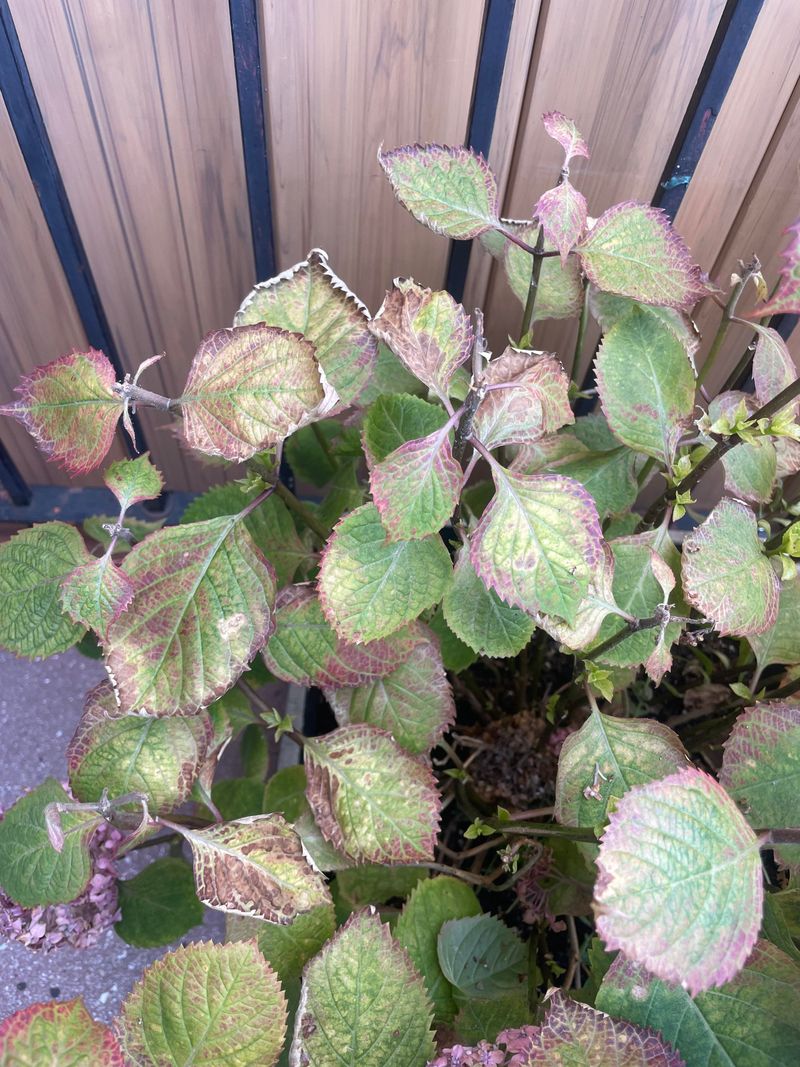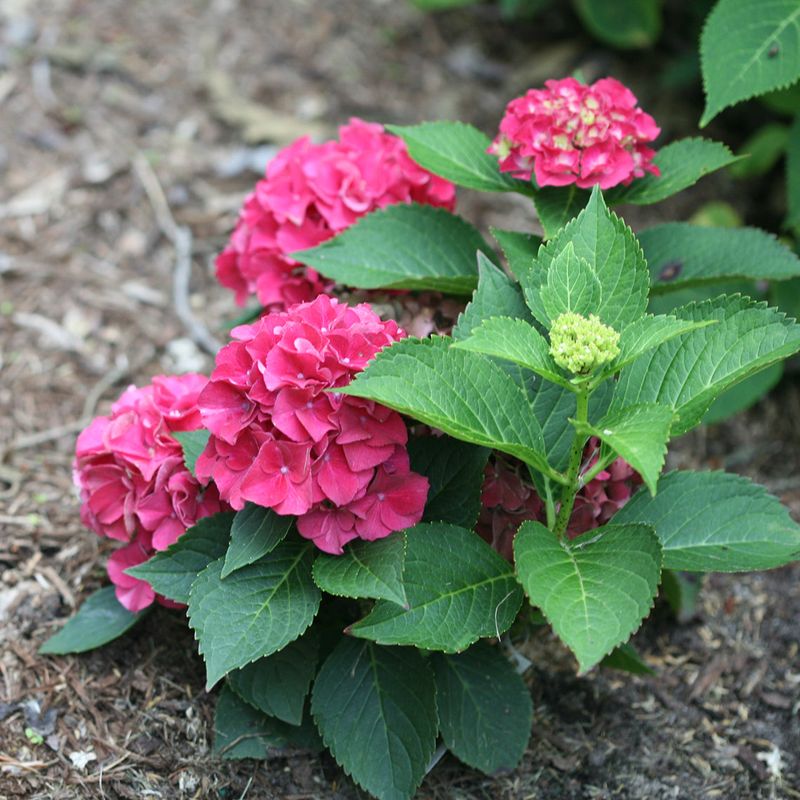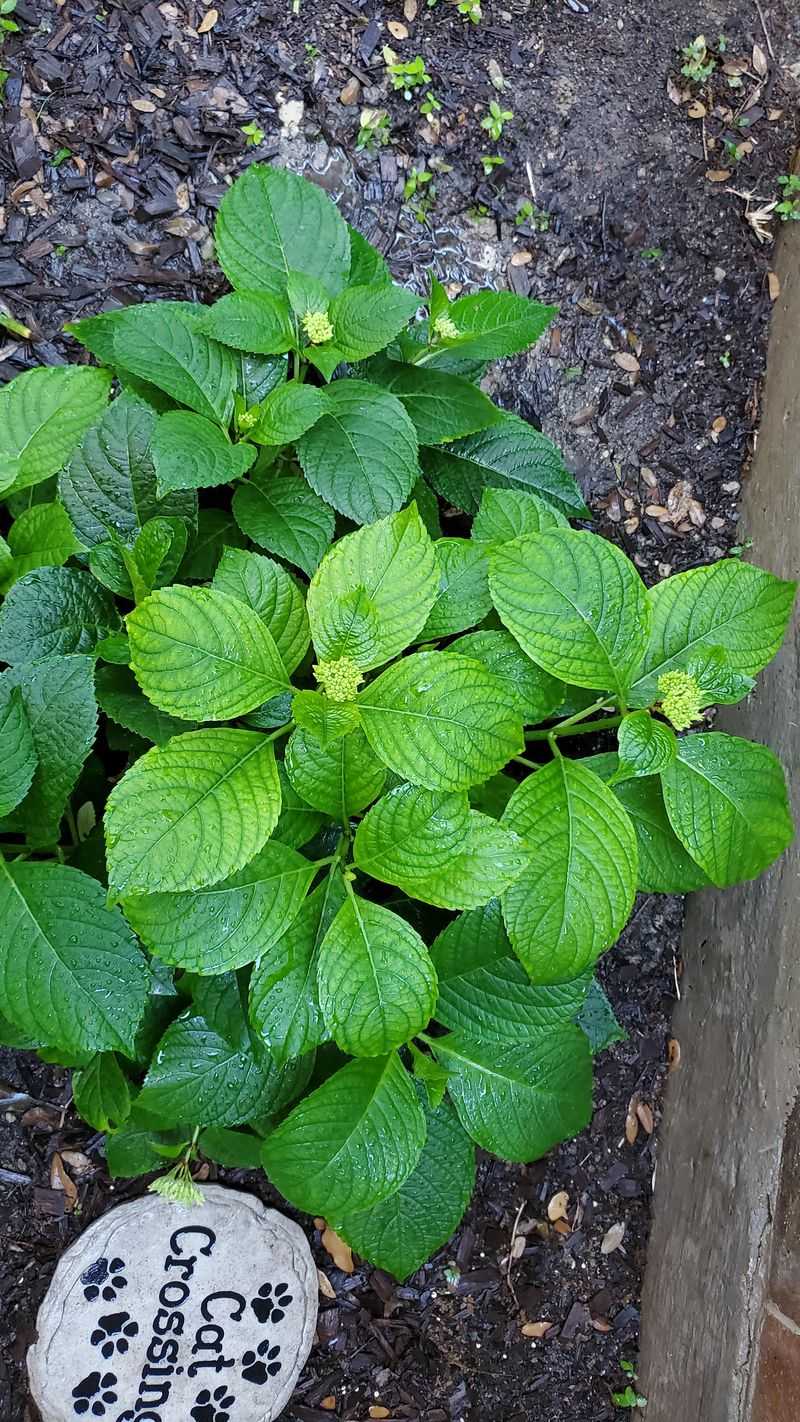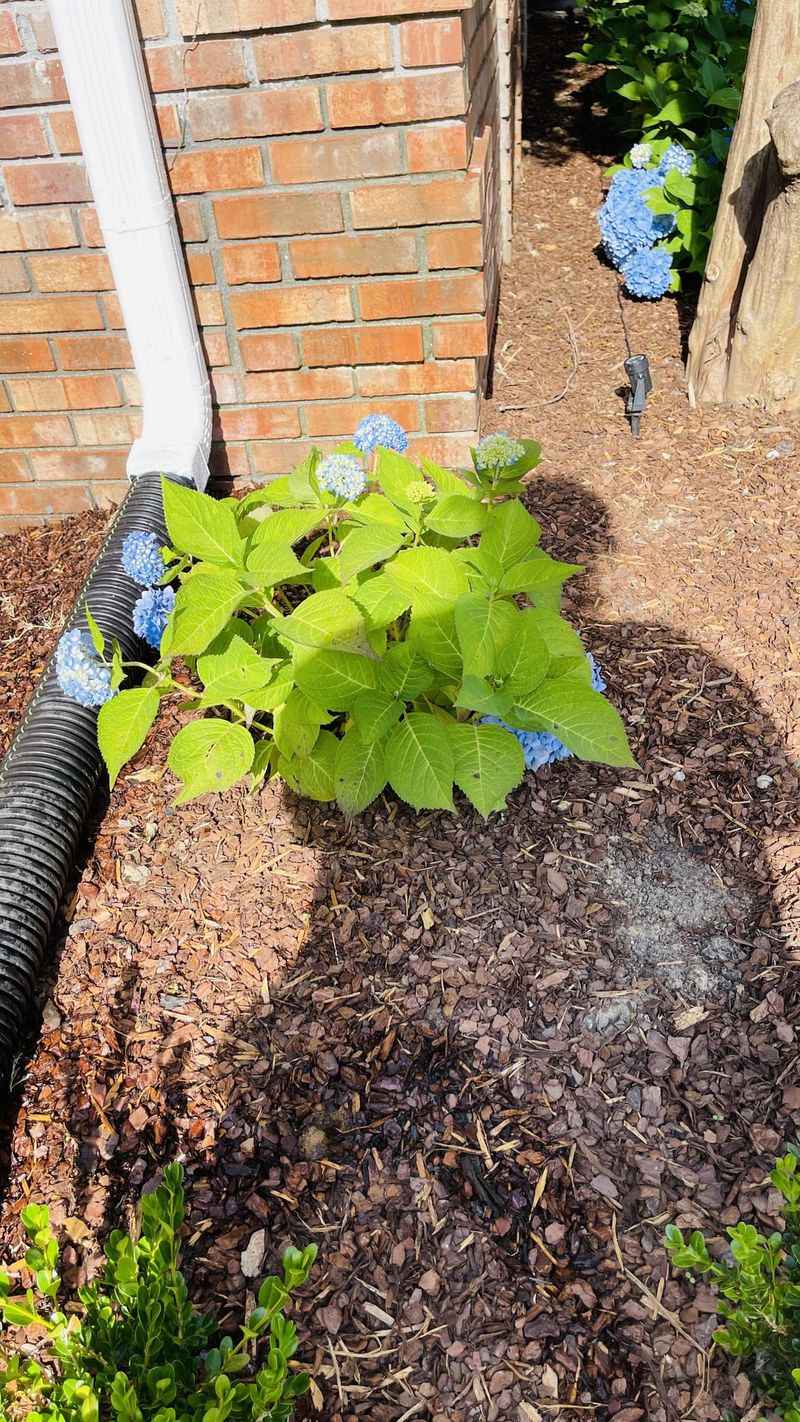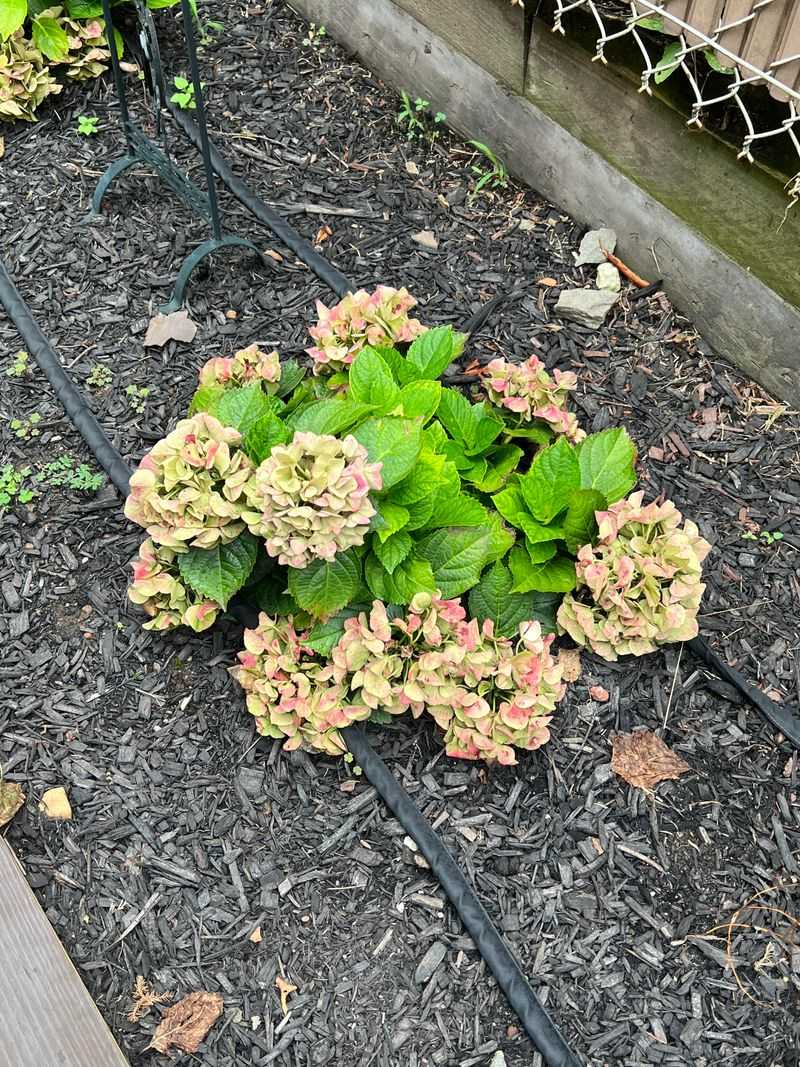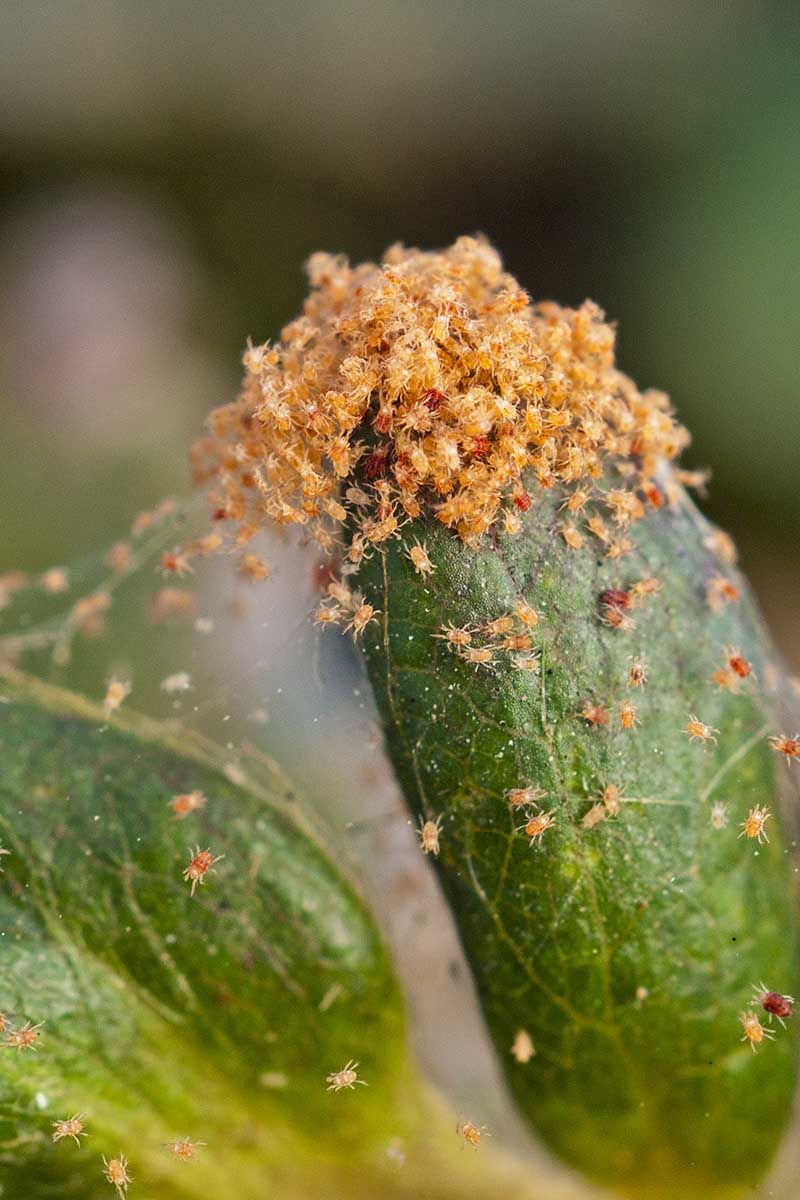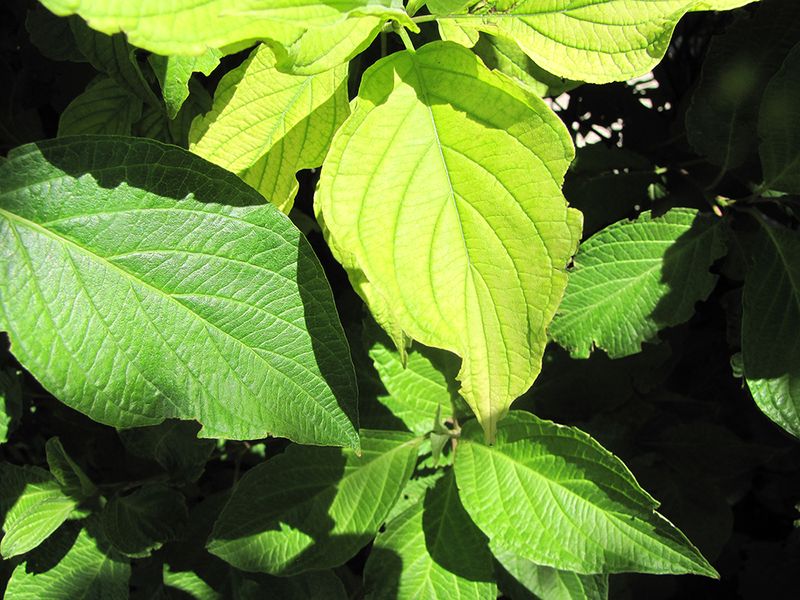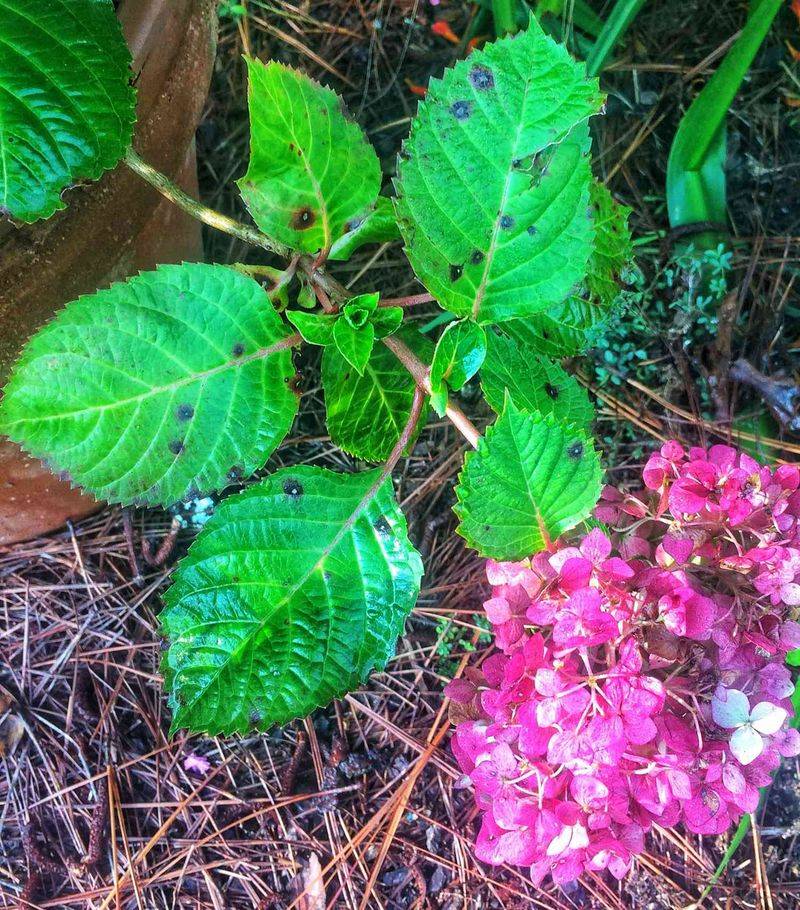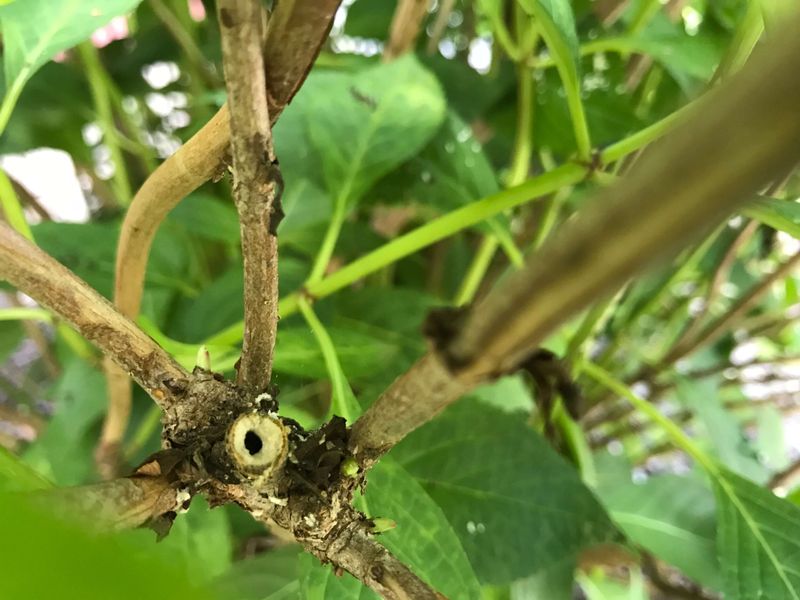Oh, the joys of gardening! You plant, you water, and then, sometimes, you watch your lovely hydrangeas look like they’re having a bad hair day. If you’ve ever found yourself scratching your head over what went wrong, you’re not alone! Hydrangeas, those beautiful, bountiful bloomers, can sometimes be a bit finicky. But worry not, fellow plant enthusiasts! We’re here to tackle the top 27 hydrangea hurdles and how to swiftly turn things around, with a smile and a trowel in hand. Let’s keep those blossoms bursting and your garden glowing!
1. Wilting Leaves
Wilting can be quite the drama queen! When your hydrangea leaves start drooping, it might be shouting for water. These plants are moisture lovers, and under-watering can make them act all ‘wilted’. Keep the soil consistently moist but not soggy to perk them up.
Forgetful with watering? Consider a drip irrigation system to keep them hydrated. Just make sure the water doesn’t pool, as roots don’t appreciate soggy shoes! Consistent watering is key. After all, no one likes to run on empty, not even plants. Pamper them with the right amount every week.
2. Yellow Leaves
Yellow leaves on hydrangeas can be like a flashing neon sign saying, ‘Help!’ Often, this is a nutrient issue, particularly a lack of nitrogen. Feed them a balanced fertilizer to turn those yellow frowns upside down.
Check the soil pH, too, because acidic soil can be a problem. Hydrangeas love slightly acidic conditions. A soil test kit can help you balance things out.
Lastly, ensure good drainage. Yellow leaves can also mean wet feet, and nobody likes wet socks! Amend soil with organic matter if needed. Happy roots mean happy leaves!
3. Fungal Diseases
Fungi aren’t just for mushrooms – they might visit your hydrangeas uninvited. Powdery mildew is a common culprit, leaving white spots. Ensure your plants have good air circulation, as cramped quarters can make disease spread quickly.
Prune any infected parts and consider a fungicide as a last resort. Try the organic route first; neem oil is a gentle option.
Regular checks can catch early signs, saving you a lot of grief. Keep those plants breezy and disease-free, like a breath of fresh air! Plus, who knew plants needed space, too?
4. Root Rot
Root rot is like a horror story for hydrangeas. Over-watering and poor drainage can cause this nightmare. Ensure pots or garden soil have adequate drainage to avoid waterlogged roots.
If you spot yellowing leaves and stunted growth, it might be time to inspect the roots. Healthy roots should be white; if they’re brown and mushy, you’ve got trouble.
Remove affected parts and replant in fresh soil. Consider adding perlite for better drainage. It’s a rescue mission, but with a little love, your plant can bounce back, turning horror into a happy ending!
5. Insect Infestation
Bugs are the uninvited guests to your hydrangea party. Aphids, spider mites, and scale insects can make themselves at home on your plants. Regularly check under leaves for these freeloaders.
A strong spray of water can dislodge many pests. Or, use insecticidal soap for stubborn cases. Ladybugs are natural predators for aphids and can be a beneficial addition to your garden.
Keep your plants healthy with proper care to make them less attractive to pests. It’s like rolling out the ‘do not disturb’ sign in your garden. Happy plants, happy gardener!
6. Sunburn
Even plants can get sunburned! Too much sun exposure can leave your hydrangea leaves looking crispy. They prefer morning sun and afternoon shade, just like a perfect picnic.
If you notice scorched leaves, consider relocating your plant or providing shade during the hottest part of the day.
A temporary shade cloth can do wonders until you find the perfect spot. Remember, moderation is key. Hydrangeas like it bright but not blazing. Sun protection isn’t just for humans; your plants deserve it too, keeping them green and glorious.
7. Poor Flowering
Where are all the flowers? Sometimes hydrangeas need a little nudge to bloom. Pruning at the wrong time can be a bummer, cutting off next season’s buds.
Ensure you’re pruning right after flowering, not in spring, to avoid cutting potential blooms. Fertilize with a phosphorus-rich option to encourage flowering.
Also, check if your plant is getting enough sun, as too much shade can hinder blooms. Balance is everything! With a bit of TLC, your hydrangeas will be the talk of the garden, bursting with vibrant, colorful blooms.
8. Wrong Soil Type
Soil is like the home of your hydrangeas, and they can be picky about it. They thrive in well-draining, rich, loamy soil. Sandy or clay-heavy soils can cause them stress.
If your hydrangeas are struggling, test your soil type and amend it accordingly. Adding organic matter can improve drainage and nutrient content.
Consider a raised bed or pots if your garden soil isn’t up to par. Your plants will appreciate the custom digs! When their home feels right, they’ll thrive, giving you a garden to boast about.
9. Frost Damage
Cold snaps can turn your hydrangeas into ice sculptures overnight. Frost damage shows up as brown, curled leaves. Protect them from sudden temperature drops with a frost cloth or by mulching around the base.
Move potted hydrangeas indoors or to a sheltered spot if frost is predicted. Winter is coming, but your hydrangeas don’t have to suffer for it.
Being proactive pays off. A little preparation ensures your plants wake up in spring ready to grow, not shiver. Think of it as tucking them in for a cozy winter’s nap.
10. Overwatering
More water doesn’t mean more happiness for hydrangeas. Overwatering can lead to root rot and yellowing leaves, leaving plants looking dreary.
Check soil moisture before watering. Stick your finger a couple of inches into the soil; if it feels damp, hold off on watering.
Ensure pots have drainage holes, and garden soil drains well. Hydrangeas like their drinks, but they don’t want to be drowning. Finding the right balance keeps them healthy, lush, and thriving without the need for a life preserver!
11. Underwatering
Feeling thirsty? Your hydrangeas might be. Underwatering can leave them looking parched and sad. These plants appreciate regular, deep watering to keep their roots happy.
If leaves are turning brown or crispy, increase your watering routine. However, ensure the soil has good drainage to prevent overwatering.
Mulching can help retain soil moisture, especially during the hot months. It’s all about balance in the hydration game. Hydrangeas need consistency—like a steady spa day—to keep them perky and pleasing in your garden.
12. Nutrient Deficiency
Hungry plants show their displeasure with nutrient deficiencies. Hydrangeas may display yellowing leaves or stunted growth if they’re not getting their grub on.
Conduct a soil test to identify what’s missing. Often, a balanced, slow-release fertilizer can help fill the gaps.
Supplement with micronutrients if needed, like iron or magnesium. Happy plants are well-fed plants! By addressing deficiencies, you’ll see them thrive and flourish with an abundance of blooms. It’s like giving them the ultimate garden buffet, satisfying their needs for a blooming success.
13. Incorrect Pruning
Snip-snip, oops! Incorrect pruning can be disastrous, cutting off next season’s flowers. Hydrangeas need a careful hand, with timing being everything.
Prune right after blooming to avoid removing future buds. Different varieties have different needs, so know your plant!
For new gardeners, less is more. When in doubt, consult a gardening guide or forum. With thoughtful pruning, your plants will reward you with abundant blooms. It’s a trim with care affair, ensuring those flowers make the spotlight without a hitch!
14. Pest Problems
Pesky pests putting a damper on your garden? Hydrangeas can attract unwanted visitors like aphids and slugs, creating holes in those lovely leaves.
Handpick larger pests or use traps to combat them. Neem oil and insecticidal soap are great for smaller invaders.
Encourage natural predators like ladybugs to patrol your garden, maintaining balance. Vigilance is your friend; by regularly checking your plants, you can nip pest problems in the bud. Let’s keep those hydrangeas looking pristine and pest-free without harsh chemicals!
15. Transplant Shock
New digs can be tough! Transplant shock can leave your hydrangeas looking a bit under the weather. Wilting and leaf drop are common signs post-move.
Water thoroughly after transplanting and keep them out of direct sunlight initially. Patience is key; they need time to adjust to their new home.
Adding a bit of root stimulant can help ease the transition, giving them a boost. It’s like a housewarming gift for your plants! With a little TLC, they’ll settle in nicely and start thriving once again in their fresh digs.
16. Leaf Spot
Speckled leaves are not a fashion statement! Leaf spot is a common hydrangea issue, leaving unsightly spots on leaves.
Keep foliage dry by watering at the soil level and ensure good air circulation around plants. Removing infected leaves helps stop the spread.
Fungicide may be necessary for severe cases, but organic options like copper-based sprays can be effective. Consistent monitoring and early intervention keep leaf spot at bay. Your hydrangeas will thank you with unblemished leaves, maintaining their glamour and grace in the garden!
17. Browning Edges
Feeling crispy around the edges? Browning leaf edges can be caused by a host of issues, from drought stress to salt buildup.
Inspect your watering habits; sometimes less is more. Over-fertilizing can also cause salt burn, so opt for slow-release, balanced feeds.
Mulch can help maintain soil moisture, reducing heat stress. Treat your hydrangeas to the spa treatment they deserve, with balanced care for lush, green foliage that’s as soft as a whisper in the breeze!
18. Improper Mulching
Mulch—great for moisture, bad for bark if used incorrectly. Piling mulch against hydrangea stems can lead to rot and pests.
Keep mulch a couple of inches from the base, creating a donut shape around plants. This encourages good air circulation and keeps stem rot at bay.
Use organic mulch to enrich the soil and keep weeds down. It’s all about balance—mulch is your garden’s best friend when used wisely. Hydrangeas will thrive, and your garden will look neat, tidy, and rot-free!
19. Acidic Soil Preference
Not all soils are created equal. Hydrangeas have a preference for acidic conditions, which can influence their bloom color.
If blooms are dull, check your soil pH. Amend with sulfur or pine needles for more acidity if needed.
Remember, too much acid can also be harmful. Regular soil tests ensure optimal conditions, allowing hydrangeas to show off their vibrant hues. It’s a color show, dictated by the soil! Keep it in check for the most dazzling display.
20. Alkaline Soil Issues
Alkaline soil—more foe than friend for hydrangeas. This can lead to yellowing leaves and affect bloom color, turning them pinkish.
To lower pH, add organic matter like peat moss or coffee grounds, adjusting gradually.
Patience is key; soil amendments take time to change pH. Regular testing ensures you’re on track, helping your plants thrive in a balanced environment. Hydrangeas love a slightly acidic stage to flaunt their true colors, creating a garden spectacle.
21. Rust
Rust isn’t just for old bicycles; it can affect hydrangeas too! Those rusty spots signal a fungal infection.
Good air circulation and dry leaves help prevent rust. Trim affected areas and avoid overhead watering.
Organic fungicides can be used if the problem persists, but prevention is the best medicine. Keep your garden tools clean and encourage airflow. Hydrangeas will thank you with healthy, lush foliage, free of unsightly spots, keeping your garden vibrant and vigorous!
22. Leaf Curl
Curled leaves on hydrangeas can signal stress, often from heat or water issues.Ensure they have enough moisture, particularly in hot weather. Mulching can also help conserve water.
If heat is the culprit, providing afternoon shade can ease the stress. With the right tweaks, your hydrangeas will unfurl their leaves, ready to soak up the day without curling away. It’s a delicate balance, but worth the effort for a thriving plant!
23. Spider Mite Infestation
Spider mites—tiny but mighty in causing trouble. They leave webbing and speckled leaves on your hydrangeas.
Blast them off with water or apply insecticidal soap for stubborn infestations. Keeping plants healthy and hydrated helps prevent outbreaks.
Encourage natural predators like predatory mites to maintain control. A vigilant eye and quick action keep your plants thriving, free from these pesky invaders. Hydrangeas deserve a mite-free life, and a little care ensures they get it!
24. Chlorosis
Seeing yellow between the veins? Chlorosis is a sign that your hydrangeas aren’t getting enough nutrients, particularly iron.
Check soil pH—alkaline conditions can inhibit nutrient uptake. Add iron chelates or adjust pH if necessary.
Regular fertilization and soil amendments keep chlorosis at bay. Hydrangeas will thank you with vibrant, healthy leaves, showcasing their full glory in your garden. With a little care, you can turn those yellow frowns into lush greens!
25. Anthracnose
Anthracnose, the uninvited guest that leaves ugly spots on your hydrangeas. Wet conditions and poor airflow can exacerbate the problem.
Prune to increase air circulation and remove affected leaves promptly. Copper fungicides can help if the issue persists.
Keeping plants healthy and stress-free is the best prevention. Regular checks ensure early detection, helping you maintain a beautiful, spot-free garden. Hydrangeas deserve to shine, and with a little effort, they can, free from anthracnose’s blemish!
26. Winter Dieback
Old Man Winter can be tough on hydrangeas. Dieback leaves them with dead stems come spring.
Proper winter protection is key. Mulch heavily around the base and consider burlap wraps for extreme cold.
Prune dead wood in spring to encourage new growth. Hydrangeas will bounce back with vigor, ready to take on the new season. With the right winter prep, they’ll thrive, waking up from their cold slumber with aplomb! Your garden will thank you for the extra care.
27. Nematodes
Tiny but fierce, nematodes can wreak havoc on hydrangea roots, causing stunted growth.
Introduce beneficial nematodes to combat the bad ones, or solarize soil to reduce populations.
Crop rotation and organic soil amendments can also help. Maintaining a healthy soil ecosystem keeps nematode problems at bay, allowing your hydrangeas to grow strong and flourish. A little attention goes a long way in ensuring your garden’s success, with robust, thriving plants free from pesky nematodes!


